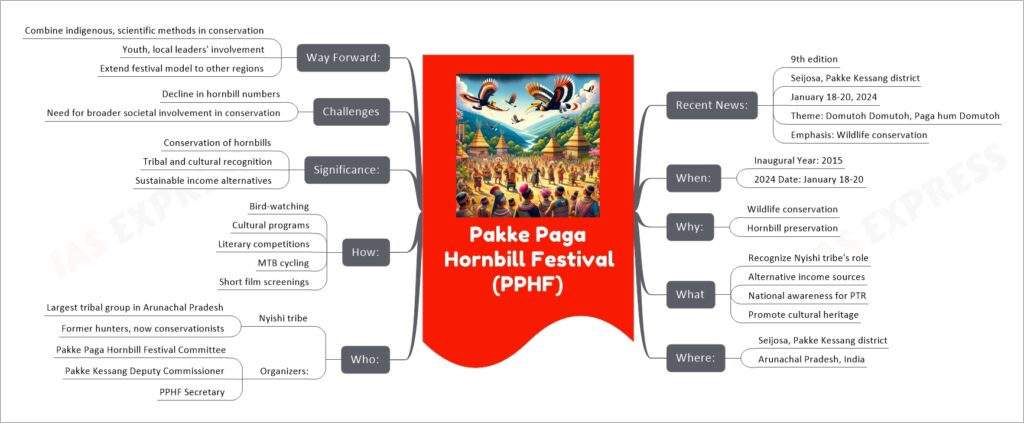Pakke Paga Hornbill Festival (PPHF)

The Pakke Paga Hornbill Festival (PPHF) is an annual event held in Seijosa, Pakke Kessang district, Arunachal Pradesh, India. It focuses on wildlife conservation, especially the preservation of hornbills. The 9th edition of PPHF in 2024 emphasized the theme “Domutoh Domutoh, Paga hum Domutoh” (Let Our Hornbills Remain), reflecting the festival’s dedication to conserving these majestic birds. The event showcases the critical role of the Nyishi tribe, who have transformed from hornbill hunters to conservationists. The festival involves various activities like bird-watching, cultural programs, and workshops, aiming to foster environmental awareness and support sustainable livelihoods while celebrating tribal and cultural heritage. The festival’s significance lies in its contribution to wildlife conservation and the promotion of the Nyishi tribe’s cultural heritage. However, it also faces challenges such as the declining hornbill population and the need for broader societal engagement in conservation efforts. The festival is seen as a way forward in combining indigenous and scientific methods in conservation practices and involving youth and local leaders in biodiversity conservation.

